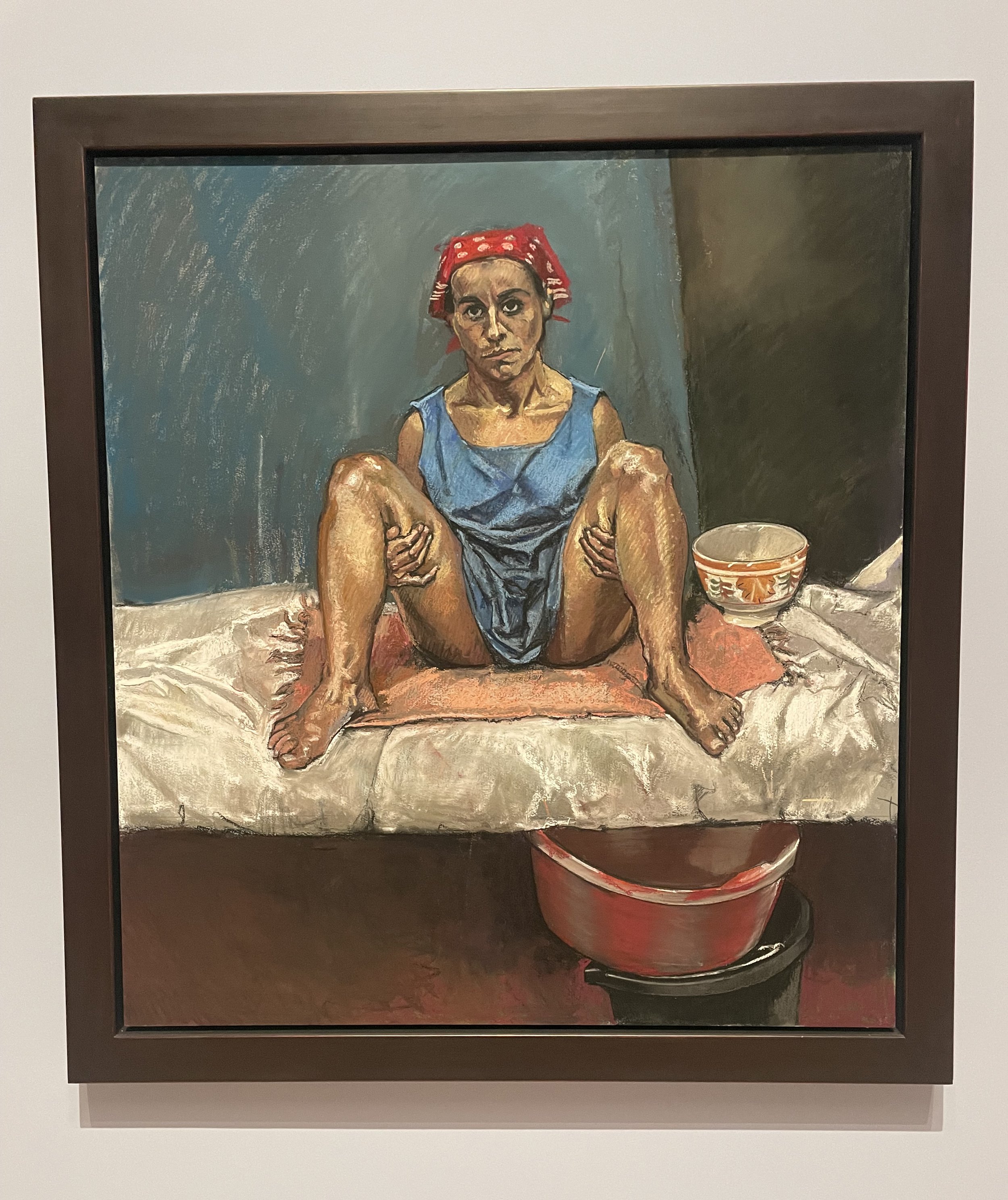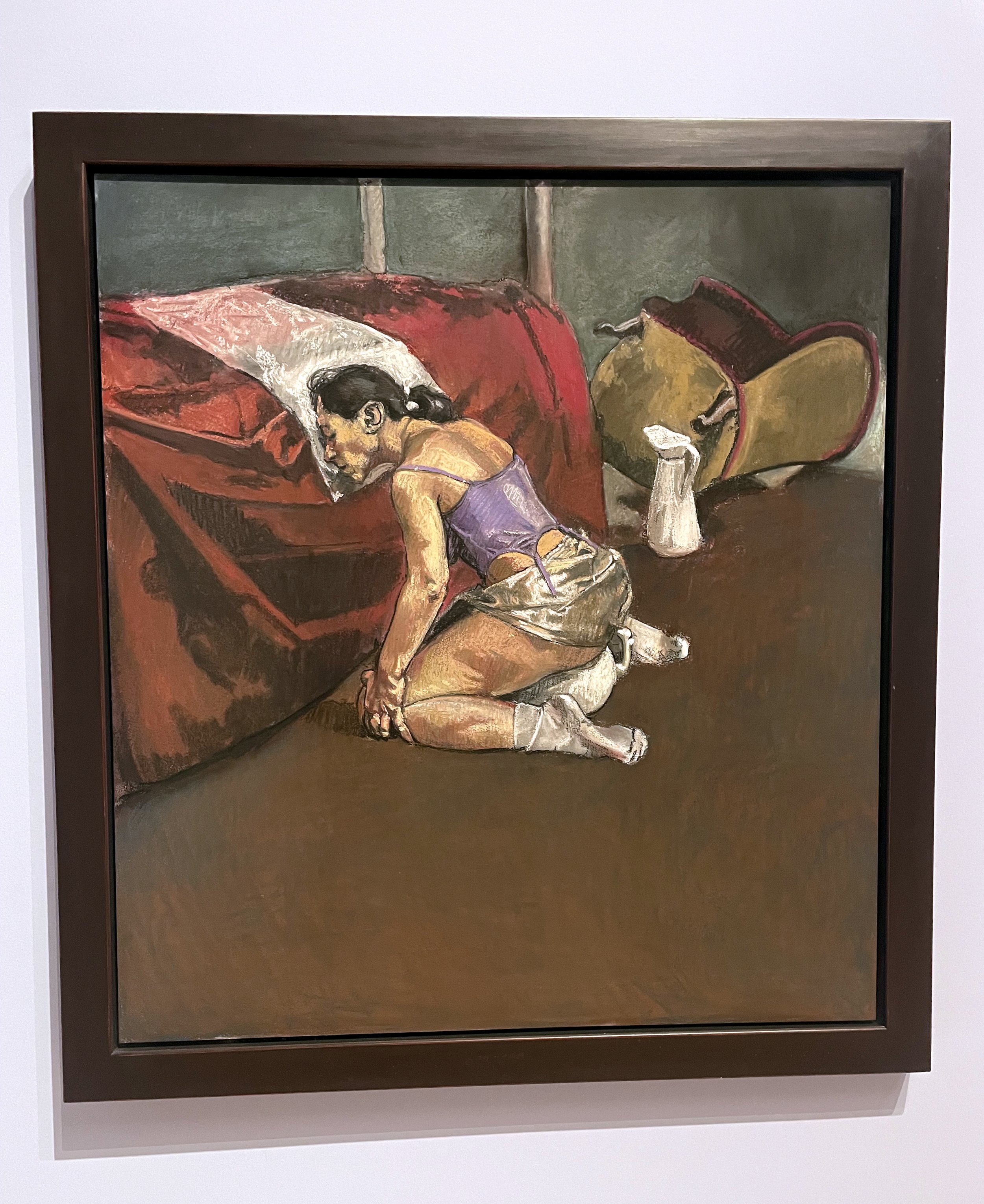What makes a good artist? It kind of seems like an overplayed question that’s been done to death, who decides it deserves praise to be at a high-end gallery? How is it decided; via the very few who are the gatekeepers in the elitist art world? Why is it decided; flavour of the month, a trend that will likely to sell? With anything that is considered ‘great’ and stands the grasp of time, modern art needs time to sit, age, and endure periods of time, especially when peoples’ views, perceptions, and ideas of the world change faster than ever before. Will the artwork mature like wine or become stale like beer?
‘Sleeping, 1987
This state of flux and everything feeling temporary is hardly a new concept, moreover, it’s easier than ever before to discard something that becomes outdated, politically incorrect, or out of touch, despite its aesthetic qualities. It almost feels as if art nowadays has become a commodified entertainment business, that delights the rich with the occasional name dropping at a dinner party “Me and Karen went to the Lubaina Himid show, oh it was so delightful”, or it enrages the working class with played out lines like “That’s just a bed in a gallery, I could do that”. At least there’s one good thing that comes out of all this, it gets people talking about art, either good or bad.
When I was trying to describe Paula Rego's art to a friend of mine earlier this year from the work I've seen in different galleries over the years, I realised the cheap sales pitch I used to describe why I liked her work. “I love the gestures of body language in her work, they are so alive!”. When I look back to when I said this after seeing her oeuvre and understanding it a bit more than just surface-level understanding, I feel there is far more to it than just that. Her work is multi-dimensional, layered with narratives and symbolism that confronts the viewer with a reflected awkwardness.
‘The Raft, 1985’
Over seven decades of the artwork shown in multiple rooms across Tate Britain, you get a sense of Paula Rego’s intentions as an artist. Exploring subject matters such as; the dynamics between men and women, female gentile mutilation, abortion, death and she cleverly depicts the souls of these people, opposed to just painting portraits of them.
What I love about her work is how confrontational it is through layers of visual metaphors and codes that are embedded with a dark, uncomfortable narrative. You see it, but you are not sure if what you are questioning is what Rego is communicating. There are hints of revulsion, innocence, violence, and fantasy that tempt you to think her work is more than just a one-dimensional, theatre trick. You deliberately hesitate, regaining faith in another perspective of how you should interpret this painting, but it’s no good; a regurgitating flow of familiarity from the last painting starts to join the dots and you resume outside your comfort zone. Seeing a lot of her most important work in one show challenged me to question a duality between what you want to see and what is being shown.
‘Return of the Native’, 1993
As you enter the first room of the exhibition, you’re immediately drawn to an expressive, politically conscious painting that has echoes of the murky tones of Edvard Munch called; ‘Interrogation’ (See below). Paula Rego was just 15 years old when she made this in 1950, yet brilliantly captures the human soul in despair via a contorted woman’s body (Think of Egon Schiele) in context to what was happening at the time with the Estrado Novo regime in Portugal oppressing many people. To paint this at such a young age at such a difficult time is truly brave and mature. This piece is really good because she voices her frustration with the state system via a woman who is experiencing imprisonment and torture. The levels of execution are good, but as you see how her works develop later on in life, you see how she holds onto the idea of political consciousness in her work of justice and questions it.
‘Interrogation’, 1950
She continues with the same theme but applied it in drawings. These however are from her memories and unconscious fears.
In the same room, another highlight was the title was taken from a racist and murderous comment made by a Portuguese fascist; ‘When we had a house in the country we’d throw marvelous parties and then we’d go out and shoot black people.’ 1961 (Below). She felt appalled by Portugal’s colonial stance that intensified military operations in Mozambique and Angola that resulted in brutal outcomes. When I was looking at this painting, I could see influences from Jean Dubuffet, Cy Twombly via the approach of mark-making. She depicts a contrast between the colonisers, the privileged life, and the people being abused. This was done via the use of colour and space (the lighter, creamier colours seem to float, in relation to the dark overwhelming sense of impending doom. Again, Paula Rego sympathizes with victims in a society that is undeniably imbalanced and morally wrong. I was always told that an effective exhibition must have a strong start, or piece and here the curators got it bang on.
‘When we had a house in the country we’d throw marvellous parties and then we’d go out and shoot black people.’ 1961
There is so much energy and spontaneity in her work as you progress to the other rooms, it’s almost like she found a new voice by adding more cartoon-like outlines, yet violently expressive figures and simplified colours. She claimed that these were her most intimate paintings that look at the relational dynamics between man and woman.
‘Red Monkey Offers Bear a Poisoned Dove’, 1981
Her ideas become bolder as she gets older where you can see influences from Velázquez with how she applies to tone and texture, but also by depicting more animals in her work, something that I’ve used quite a bit in my artwork over the years. From my experience, using animals instead of humans and the relationships we have with animals as a metaphor in artworks can be wildly playful. For Paula Rego she explains that; “wanting to harm a person you love...if you make them into animals, you can do anything can’t you?” you start to see a pattern of dogs and women using gestures like dogs appearing in her work. These paintings are confrontational, whilst the women in these paintings are howling, crouching, and biting, simultaneously fuelled with a spirit of wildness that you are unsure if they are dangerous or vulnerable.
Another painting that grabbed my attention was ‘The Policeman’s daughter’ (below), 1987. Both paternal and state power are alluded to by the policeman's boot. As she diligently polishes a police officer's boot, the girl's position is unclear. As an attack against patriarchy through female sexual liberation, she inserts her arm inside the boot. She could, on the other hand, be obediently serving and conforming to those in authority. The symbolic narrative continues with an ambivalent black cat, unsure of its intentions. Is the cat a symbol of the girl, trying to escape the realities of everyday duties or is it guarding the girl and searching for its victims? This is what I love about her work, even though she had a clear idea when painting something, it’s still open to interpretation.
‘The Policeman’s Daughter, 1987
In ‘Snare’ (below), she applies more volume and shadow and very detailed patterns and texture. The woman’s bulging skirt is hiding a secret, a concealed truth, that reveals one's dark side or ‘shadow’. Psychiatrist Carl Jung coined this word to characterise the unconscious mind's repressed impulses, vulnerabilities, and sexual inclinations. Rego valued Jungian’s concepts because it encouraged her to use painting to express her hidden fears and desires.
‘Snare’, 1987
These rooms are so good and filled with such strong paintings that you can begin to see that she is an important artist. For example, in ‘The Maids’ (Below), 1987 she explores themes of domination and oppression. The subject matter of power imbalances is realized via attire and role-playing and asks the viewer to consider who is in charge. On the wall, she again employs shadows as a metaphor that echos the killing hands. A wild boar entering into the household environment is another animal featured, which suggests drama.
‘Family’, 1988
After her partner died, Paula Rego painted ‘The Dance’ (Below) which took her 6 months to complete. Set on a beach in Portugal with her late husband appearing twice in the painting. He is shown dancing with Paula Rego and then again with another lover with blonde hair. This plurality along with the movement of the people contradicts the stillness of the building behind the dancers which was inspired by a fort used as a prison to torture civilians during the Estado Novo.
‘The Dance’, 1988
The "Abortion" series in 1999 (Below), was created at the time of Portugal's abortion vote and is candid in its reality. The harshness of texture and aggressive contours of this series add an even darker element to an already taboo subject.
She uses other animals to convey ideas about other subject matters. For example, in 2003 she created a painting called ‘War’ (Below) which is a powerful reimagining of a newspaper shot of a bombing in Basra, featuring a rabbit-head-human and other bloodied victims trying to find some form of peace.
‘War’, 2003
What makes a good artist? An. Artist. Like. Paula. Rego.

















